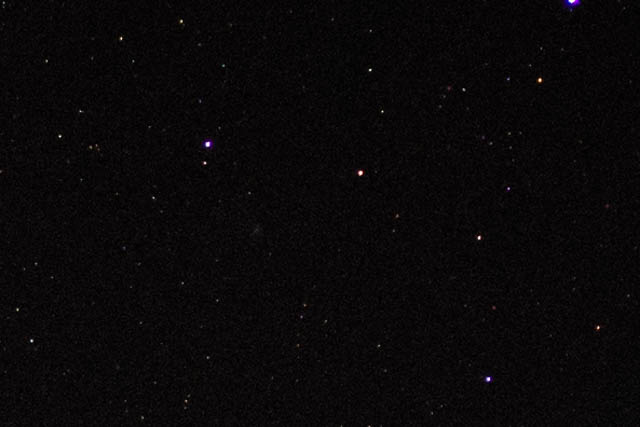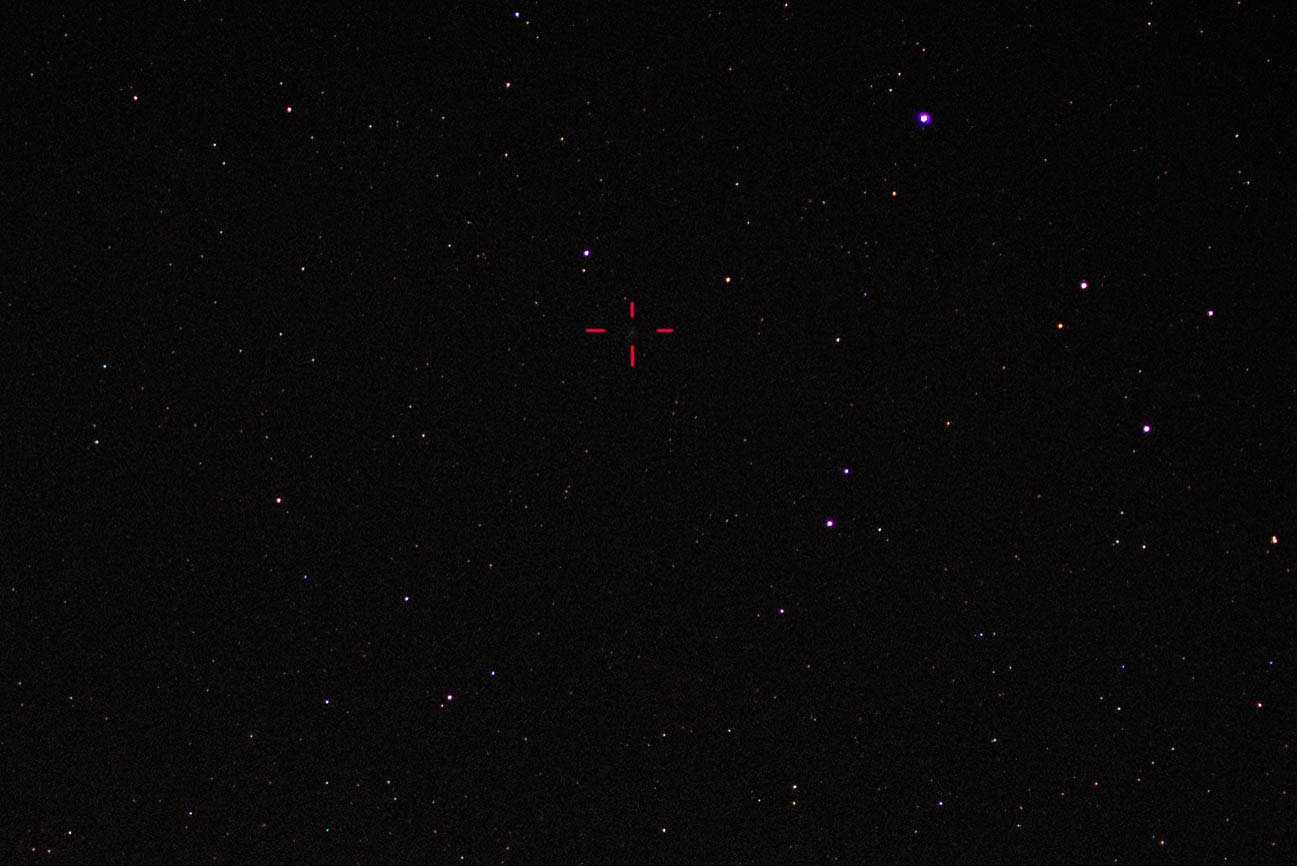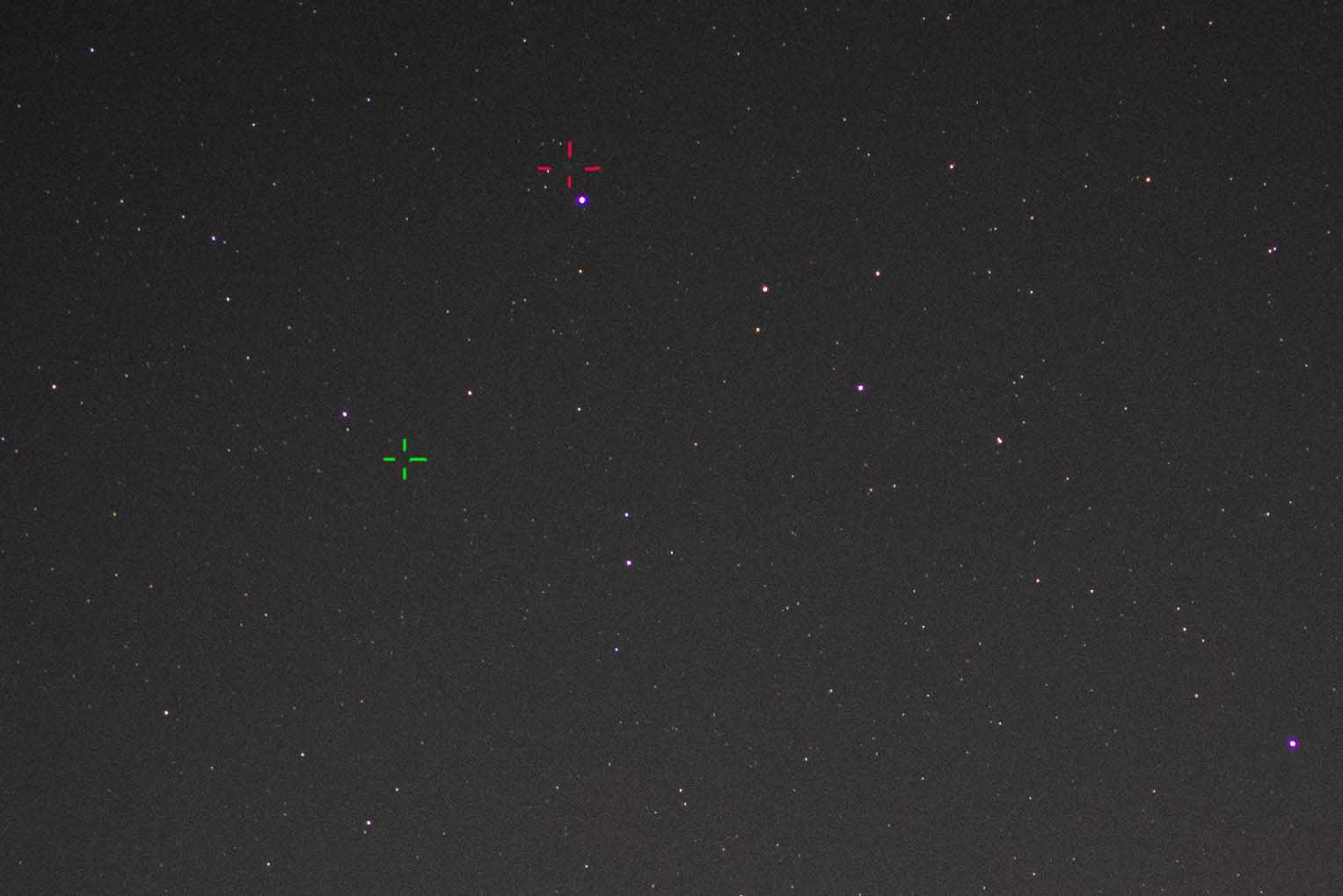Comet C/2012 K1 PanSTARRS is currently visible in Sydney from late at night to early morning. It is quite hard to see and is fading. I tried looking with binoculars without success. I also took some photographs of the bit of sky it is supposed to be in, and then processed those photos and looked for a smudge that could be the comet.
The night sky in Sydney is very badly light polluted. For a dark sky, for example, west of the Blue Mountains, I would typically take a night photo of the stars with an exposure time given by the rough rule of thumb – 500/ focal length. This is about the limit for a photo to avoid star trails. I was using a 50 mm lens so my maximum exposure time would be about 10 seconds. The lens should be wide open (in my case f 1.8), and I used an ISO of 3200. But, in Sydney, this gives a white washed out photo due to the pollution. These photos can work if you shoot in raw and then post process – darkening the image and playing with the tone curve. I think I ended up using an exposure of about 4 seconds.
Careful looking at my photos, comparing them to a star map showing the path of the comet, and taking more photos on a second night did show that I had indeed photographed the comet. In each photo, the red cross marks the position of the comet. In the bottom photo, the green cross marks the first position.



